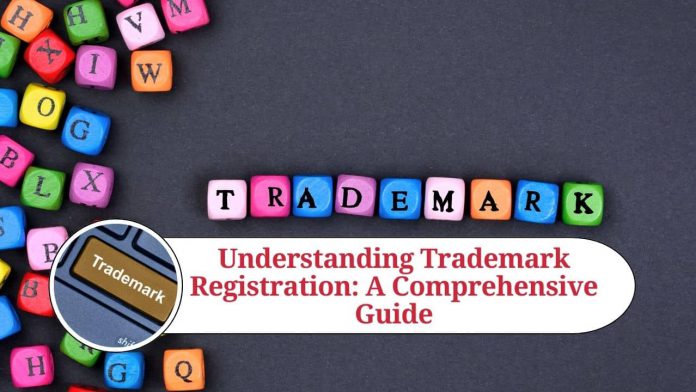Introduction:
Trademarks are essential assets for businesses as they represent their brands and distinguish their products and services from their competitors. Trademark registration is a legal process that offers exclusive rights and protection to the owners of the mark. In this guide, we will cover the basics of trademark registration and the benefits it provides.
What is a Trademark?
A trademark is a unique symbol, design, word, phrase, or combination of these elements that identify and distinguish a company’s products or services from those of its competitors. Examples of well-known trademarks include the Nike swoosh, the McDonald’s golden arches, and the Coca-Cola script.
Why Register a Trademark?
Registering a trademark provides several benefits, including:
- Exclusive rights to use the mark for the products and services listed in the registration
- Protection from unauthorized use by competitors
- Ability to sue for trademark infringement
- Increased brand recognition and value
- Ability to license or sell the trademark
Trademark Registration Process:
The trademark registration process can be summarized in the following steps:
- Conduct a trademark search to ensure the mark is available for registration
- File a trademark application with the appropriate government agency, such as the United States Patent and Trademark Office (USPTO)
- Wait for the application to be reviewed by the examining attorney
- Address any issues or objections raised by the examining attorney
- If the application is approved, the trademark will be registered, and the owner will receive a certificate of registration
Trademark Search:
Before filing a trademark application, it’s important to conduct a comprehensive search to ensure that the mark is available for registration. This involves searching the USPTO’s trademark database, as well as state and common law sources.
Trademark Application:
The trademark application should include the following information:
- The mark to be registered
- The products and/or services that the mark will be used to identify
- The owner of the mark
- The date of the first use of the mark in commerce
- A specimen of the mark as it appears on the product or service
Trademark Examination:
After filing the trademark application, an examining attorney will review the application to ensure that it meets the legal requirements for registration. The examining attorney may raise objections or issue a refusal if there are any issues with the application.
Trademark Registration:
If the trademark application is approved, the owner will receive a certificate of registration, which provides exclusive rights to use the mark in connection with the products and services listed in the registration.
Benefits of Trademark Registration:
Trademark registration offers several benefits to businesses, including the following:
- Legal Protection: Trademark registration provides legal protection against the unauthorized use of the mark by competitors. It enables businesses to take legal action against those who attempt to infringe on their brand identity.
- Exclusive Rights: Registered trademarks offer exclusive rights to use the mark for the products and services listed in the registration. This means that no one else can use the same or similar mark for identical or related products or services.
- Brand Recognition: A registered trademark helps businesses establish brand recognition and awareness in the marketplace. Consumers associate the trademark with the quality of the products and services offered by the business.
- Competitive Edge: A registered trademark gives businesses a competitive edge over their competitors by distinguishing their products and services from others in the market.
- Asset Value: A registered trademark is an asset that can add value to a business. It can be licensed or sold to generate revenue for the business.
Trademark Infringement:
Trademark infringement occurs when someone uses a mark that is identical or similar to a registered trademark for similar products or services, leading to confusion among consumers. In such cases, the owner of the registered trademark can take legal action against the infringing party. The remedies available for trademark infringement include an injunction, damages, and destruction of infringing goods.
Trademark Renewal:
Trademark registration is valid for ten years from the date of registration. After the expiration of the registration, the trademark owner can renew the registration for another ten years by filing a renewal application. It’s important to renew the trademark on time to maintain the legal protection and exclusive rights that come with registration.
Trademark Assignment:
Trademark assignment is the process of transferring the ownership of a registered trademark to another party. This can be done through a written agreement between the current owner and the assignee. The assignment must be recorded with the USPTO to be effective.
International Trademark Registration:
Trademark registration is also available on an international level through the Madrid System, which is an international treaty that allows businesses to register their trademarks in multiple countries with a single application. The Madrid System simplifies the process of protecting trademarks globally and is an effective way for businesses to expand their brand identity beyond their home country.
Trademark Monitoring:
Trademark monitoring is the process of actively monitoring the marketplace for unauthorized use of the registered trademark. This helps businesses identify potential infringement and take appropriate legal action to protect their brand identity. Several companies offer trademark monitoring services that regularly search the marketplace for potential infringement and provide timely reports to the trademark owner.
Trademark Infringement Defense:
If a business is accused of trademark infringement, it’s important to work with an experienced trademark attorney to mount a strong defense. A successful defense can include proving that there is no likelihood of confusion between the accused mark and the registered mark or that the accused mark is being used in a descriptive or fair use manner.
Trademark Licensing:
Trademark licensing is the process of allowing another party to use a registered trademark in exchange for payment of a licensing fee. This can be an effective way for businesses to generate additional revenue from their registered trademarks. However, it’s important to carefully control the use of the trademark by the licensee to ensure that it doesn’t dilute the value of the trademark or cause confusion among consumers.
Conclusion:
Trademark registration is an essential step for businesses to protect their brand and distinguish their products and services from their competitors. By following the proper steps and working with an experienced trademark attorney, business owners can ensure that their trademarks are registered and protected.
Read more useful content:
- How to Save Tax on Salary
- Guide to Understanding Direct Taxes in India
- Filing Income Tax Returns
- GST E-invoice
Frequently Asked Questions (FAQs)
Q1.) What is a trademark?
A trademark is a symbol, word, phrase, design, or combination thereof that identifies and distinguishes the source of goods or services from those of others.
Q2.) Why should I register a trademark?
Registering a trademark provides legal protection and exclusive rights to use the mark for the products and services listed in the registration. It helps prevent others from using the same or similar mark and establishing brand recognition in the marketplace.
Q3.) What is the process for trademark registration?
The process for trademark registration involves conducting a trademark search, preparing and filing an application with the USPTO, responding to any Office Actions issued by the USPTO, and paying the registration fees.
Q4.) How long does it take to register a trademark?
The process of registering a trademark can take anywhere from several months to over a year, depending on the complexity of the mark and any issues that arise during the application process.
Q5.) Can I register a trademark for a name or phrase that is already in use?
A trademark cannot be registered if it is likely to cause confusion with a mark that is already in use for similar products or services. Conducting a trademark search can help identify potential conflicts.
Q6.) What happens after my trademark is registered?
After a trademark is registered, the owner has exclusive rights to use the mark for the products and services listed in the registration. The registration is valid for ten years and can be renewed for an additional ten-year period.
Q7.) Can I trademark a logo or design?
Yes, logos and designs can be registered as trademarks. The design must be unique and distinct from any other design that has been previously registered.
Q8.) How much does it cost to register a trademark?
The cost of registering a trademark can vary depending on the complexity of the mark and the number of classes of goods or services for which registration is sought. The current fee for filing a trademark application with the USPTO is $350 per class.
Q9.) What is the difference between a trademark and a copyright?
A trademark protects a brand or logo, while a copyright protects original creative works, such as books, music, and artwork.
Q10.) Do I need an attorney to register a trademark?
While it is possible to register a trademark without an attorney, working with an experienced trademark attorney can help ensure that the process is done correctly and the mark is properly protected.




















